One of the truly interesting reads regarding Tai Chi is the classics. I wanted to share some of the wisdom I learned with you.
Tai Chi is a Chinese martial art that has been practiced for centuries. It is known for its slow and gentle movements, which are said to promote physical and mental well-being. This is a A Comprehensive Guide to the Tai Chi Classics that provide insight into the philosophy, theory, and practice of Tai Chi. In this article, we will take a deeper look at the Tai Chi Classics and explore their historical background, interpretation and translation, and the role of postures in Tai Chi.
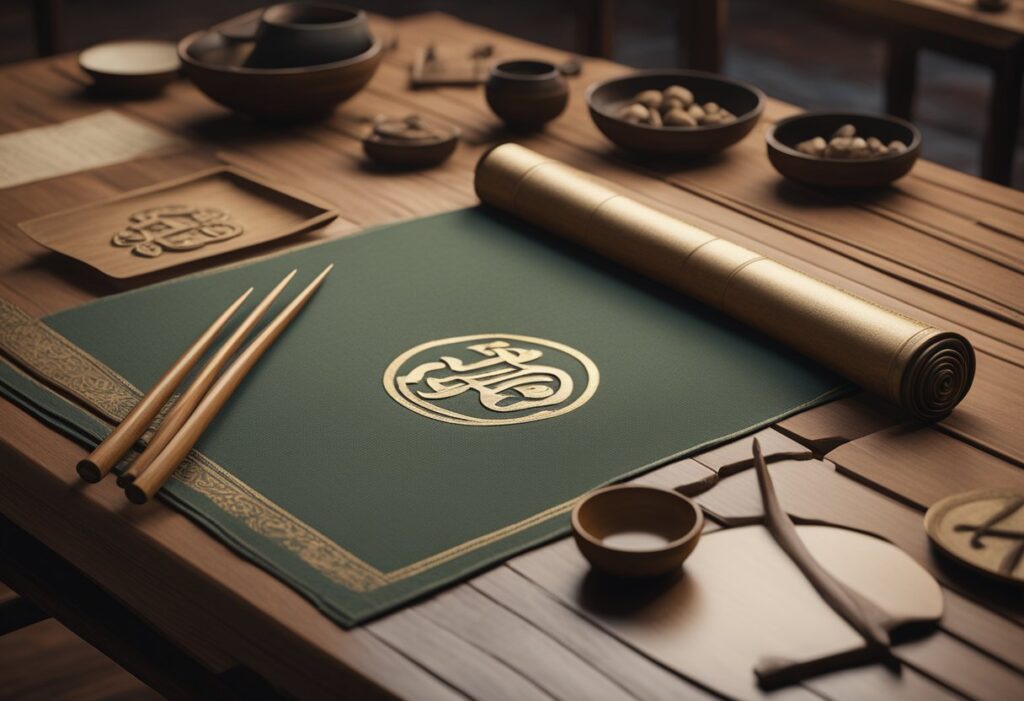
- Historical Background
- Understanding Tai Chi Principles
- Interpretation and Translation
- The Role of Postures in Tai Chi
- Techniques and Methods
- Philosophy and Theory of Tai Chi
- Influence of Tai Chi Masters
- The Practice of Tai Chi
- The Tai Chi Classics in Literature
- Achievements and Impact of Tai Chi
- Frequently Asked Questions
Historical Background
The Tai Chi Classics were written by various Tai Chi masters over the centuries. They provide a record of the development and evolution of Tai Chi as a martial art and as a form of exercise. The Classics also offer insights into the cultural and philosophical context in which Tai Chi was practiced. Understanding the historical background of Tai Chi is essential to understanding its principles and techniques.
Understanding Tai Chi Principles
The Tai Chi Classics provide a framework for understanding the principles of Tai Chi. These principles include concepts such as balance, relaxation, and the integration of mind and body. By studying the Classics, practitioners can deepen their understanding of these principles and apply them to their practice. The Classics also offer guidance on techniques and methods for developing these principles.
Key Takeaways
- The Tai Chi Classics provide insight into the philosophy, theory, and practice of Tai Chi.
- Understanding the historical background of Tai Chi is essential to understanding its principles and techniques.
- The Classics offer guidance on techniques and methods for developing balance, relaxation, and the integration of mind and body.
Historical Background

The Tai Chi Classics are a collection of writings that provide insight into the principles and philosophy of Tai Chi. The origins of Tai Chi can be traced back to the 12th century, but it wasn’t until the 19th century that the art became widely known. The Tai Chi Classics were written during this time and provide a deeper understanding of the art.
The origins of Tai Chi are often attributed to Zhang Sanfeng, a Taoist monk who lived in the 12th century. Legend has it that he created Tai Chi after witnessing a fight between a snake and a crane. He was inspired by the way the snake moved, and he incorporated those movements into his own martial arts practice.
The Tai Chi Classics were written by various masters throughout history, including Wang Zongyue, Wu Yuxiang, and Chen Wei-ming. These writings provide insight into the principles and philosophy of Tai Chi, and they are still studied today by practitioners of the art.
One of the most famous Tai Chi masters was Yang Cheng-fu, who was part of the Yang family lineage. He is credited with popularizing Tai Chi and making it accessible to the masses. His teachings emphasized the health benefits of Tai Chi, and he is often referred to as the “father of modern Tai Chi.”
Overall, the Tai Chi Classics provide a valuable resource for anyone interested in learning more about Tai Chi. They offer a deeper understanding of the art and its philosophy, and they are still studied and revered by Tai Chi practitioners today.
Understanding Tai Chi Principles

Tai Chi is an ancient martial art that has been practiced for centuries. It is a form of exercise that combines slow, gentle movements with deep breathing and meditation. The practice of Tai Chi is based on a set of principles that guide the movements, posture, and mind of the practitioner. Understanding these principles is essential to mastering the art of Tai Chi.
Principles
The principles of Tai Chi include concepts such as balance, relaxation, and flow. These principles are based on the principles of Yin and Yang, which represent the opposing forces of the universe. Tai Chi seeks to balance these forces within the body, creating a sense of harmony and well-being.
Posture
Posture is an essential part of Tai Chi practice. The practitioner must maintain a relaxed, upright posture throughout the movements. This posture allows for the free flow of energy throughout the body, promoting health and vitality.
Movement
Tai Chi movements are slow, deliberate, and graceful. The practitioner moves with a sense of ease and flow, allowing the body to move naturally. The movements are designed to promote relaxation, balance, and flexibility.
Mind
The mind is a crucial component of Tai Chi practice. The practitioner must maintain a calm, focused mind throughout the movements. This focus allows for a deeper understanding of the principles of Tai Chi and promotes a sense of well-being.
Harmony
Tai Chi seeks to promote harmony within the body, mind, and spirit. The practice of Tai Chi is designed to balance the opposing forces of Yin and Yang, creating a sense of harmony and balance within the body.
Yin and Yang
Yin and Yang are opposing forces that exist within the universe. In Tai Chi, these forces are represented by the external form and intrinsic strength of the movements. The external form represents the physical movements of Tai Chi, while the intrinsic strength represents the internal energy that flows through the body.
In conclusion, understanding the principles of Tai Chi is essential to mastering the art. The practice of Tai Chi promotes balance, relaxation, and flow, creating a sense of harmony and well-being within the body. By maintaining a relaxed, upright posture, moving with ease and flow, and maintaining a calm, focused mind, the practitioner can achieve a deeper understanding of the principles of Tai Chi.
Interpretation and Translation

Interpretation and translation are critical elements in understanding the Tai Chi Classics. These ancient texts were written in Chinese, and their meaning has been the subject of debate among scholars and practitioners alike.
One of the most important works on the subject is Lee N. Scheele’s “T’ai Chi Classics,” which provides translations of the three primary Tai Chi texts. Scheele’s translations are considered by many to be the most accurate and accessible English translations of the Tai Chi Classics.
Another important work is Louis Swaim’s “The Essence of Tai Chi Chuan: The Literary Tradition,” which provides commentary and analysis of the Tai Chi Classics. Swaim’s work is particularly valuable for its in-depth analysis of the meaning and significance of the texts.
Barbara Davis’s “The Taijiquan Classics: An Annotated Translation” is another valuable resource for those seeking to understand the Tai Chi Classics. Davis’s translation includes detailed annotations that provide context and explanation for the text.
Overall, interpretation and translation are essential for understanding the Tai Chi Classics. By studying these ancient texts, practitioners can gain a deeper understanding of this fascinating Chinese martial art.
The Role of Postures in Tai Chi
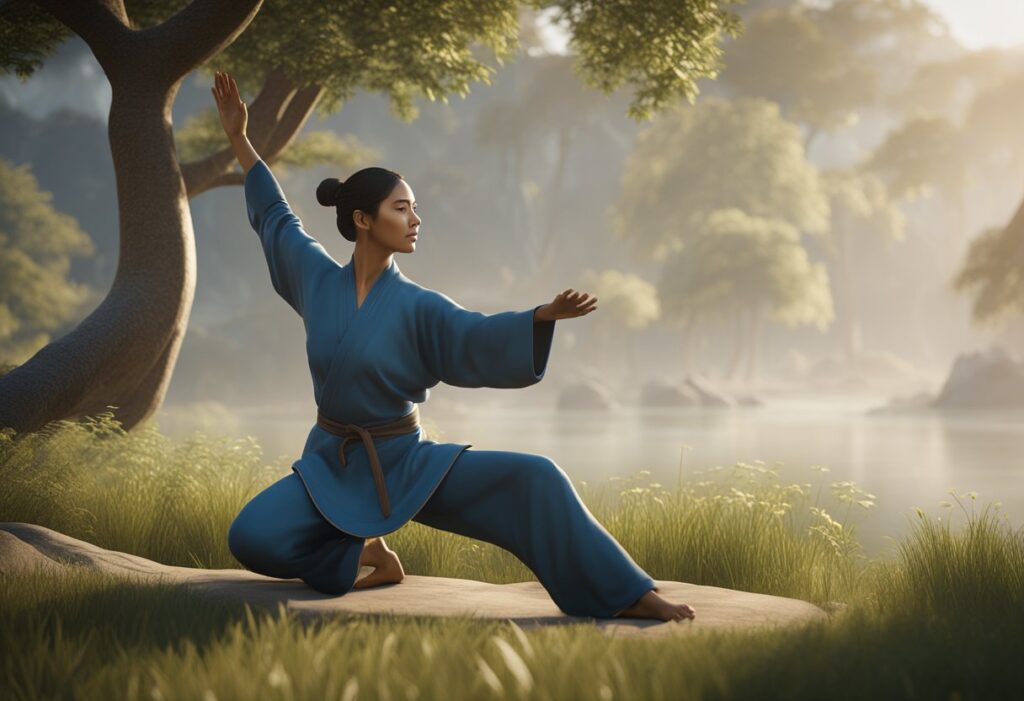
Posture plays a significant role in Tai Chi practice. The ancient Chinese text, Tai Chi Classics, emphasizes the importance of proper posture to achieve the maximum benefits of Tai Chi. The thirteen postures, also known as the eight gates and five steps, are the foundation of Tai Chi practice. They include ward off, roll back, press, push, pull, split, elbow stroke, shoulder stroke, advance, retreat, look left, look right, and central equilibrium.
Each posture has a specific purpose and function. For example, the “ward off” posture is used to deflect an incoming attack, while the “roll back” posture is used to redirect the opponent’s energy. The “press” posture is used to push the opponent away, while the “push” posture is used to strike the opponent. The “pull” posture is used to pull the opponent off balance, while the “split” posture is used to break the opponent’s structure. The “elbow stroke” and “shoulder stroke” are used to strike the opponent with the elbow or shoulder, respectively.
Proper posture is essential for the effective execution of these postures. The practitioner must maintain a relaxed and upright posture, with the head suspended from above and the waist relaxed and flexible. The legs must be rooted firmly to the ground, with the weight evenly distributed between the feet. The body must be aligned in a straight line, with the joints open and relaxed.
The Tai Chi Classics also emphasize the importance of the “stick, draw, and palm” method of Tai Chi practice. This method involves using the stick, draw, and palm to connect and coordinate the movements of the neck, head, waist, legs, and body. The stick represents the spine, the draw represents the legs, and the palm represents the arms. By using this method, the practitioner can achieve a deep level of relaxation and coordination, which is essential for the effective execution of Tai Chi movements.
In conclusion, proper posture is essential for the effective practice of Tai Chi. The thirteen postures and the “stick, draw, and palm” method are the foundation of Tai Chi practice and require a relaxed and upright posture, with the head suspended from above and the waist relaxed and flexible. By maintaining proper posture and using these methods, the practitioner can achieve a deep level of relaxation and coordination, which is essential for the effective execution of Tai Chi movements.
Techniques and Methods
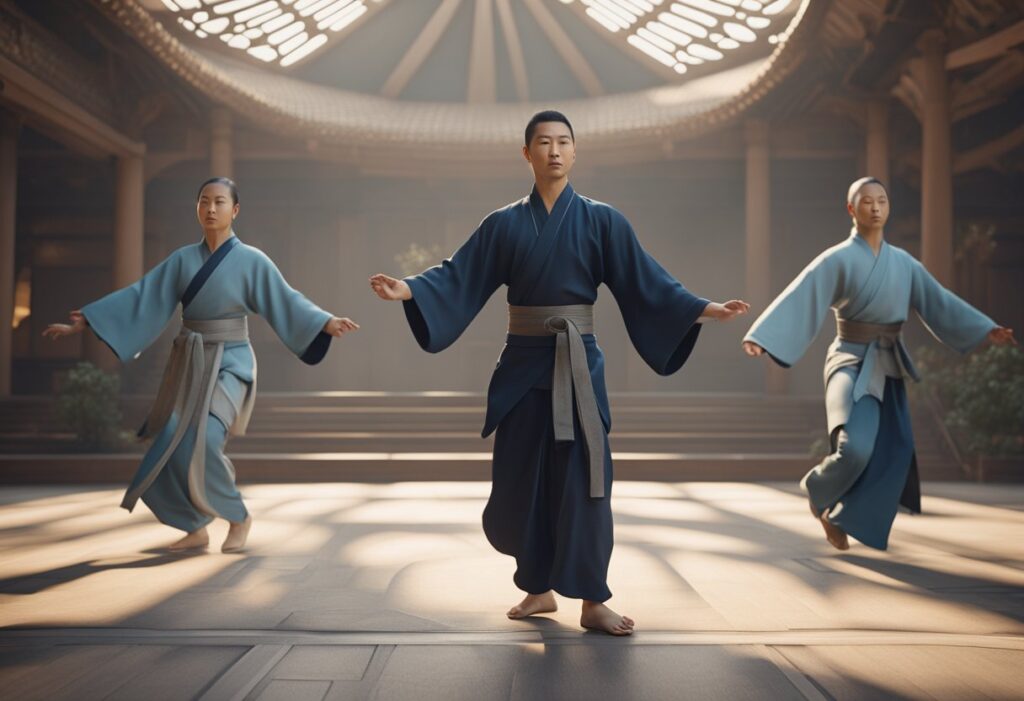
Tai Chi is a martial art that is known for its slow and graceful movements. However, there is much more to Tai Chi than just its movements. The techniques and methods of Tai Chi are what make it a powerful martial art.
One of the key techniques of Tai Chi is the method of practice. Tai Chi is typically practiced in a slow, deliberate manner. This allows the practitioner to focus on their movements and their breathing. This method of practice is designed to help the practitioner connect their mind and body.
Another important technique in Tai Chi is the use of the connect, press, and attack movements. These movements are designed to help the practitioner break through their opponent’s defenses. The connect movement is used to connect with the opponent’s energy. The press movement is used to press against the opponent’s energy. Finally, the attack movement is used to attack the opponent’s weak points.
The break, forward, seek, stab, adhere, beat, and defeat movements are also important techniques in Tai Chi. These movements are used to break the opponent’s balance, move forward, seek out the opponent’s weak points, stab the opponent with a quick strike, adhere to the opponent’s movements, beat the opponent’s attacks, and defeat the opponent.
Overall, the techniques and methods of Tai Chi are what make it such a powerful martial art. By practicing these techniques, a practitioner can become more confident, knowledgeable, and skilled in the art of Tai Chi.
Philosophy and Theory of Tai Chi

Tai Chi is an ancient Chinese martial art that has been practiced for centuries. It is a holistic system that integrates physical movement, meditation, and breathing techniques to promote health, balance, and harmony. The philosophy of Tai Chi is based on the principles of Yin and Yang, which represent the complementary and interdependent forces of the universe.
Tai Chi theory is rooted in Chinese philosophy and is based on the concept of Qi, which is the vital energy that flows through all living things. According to Tai Chi theory, Qi can be cultivated and directed through the practice of Tai Chi, resulting in improved health, increased vitality, and greater awareness.
The Tai Chi Classics, also known as the T’ai Chi Ch’uan Ching, are a collection of ancient texts that provide a deeper understanding of the philosophy and theory of Tai Chi. They contain knowledge, experience, and lore passed down from generation to generation, and provide a comprehensive guide to the practice of Tai Chi.
The Tai Chi Classics cover a wide range of topics, including the principles of Yin and Yang, the cultivation of Qi, and the importance of relaxation and softness in Tai Chi practice. They emphasize the importance of proper body alignment, breathing, and mental focus in order to achieve maximum benefit from the practice of Tai Chi.
In summary, the philosophy and theory of Tai Chi are based on the principles of Yin and Yang, the cultivation of Qi, and the importance of relaxation and softness in practice. The Tai Chi Classics provide a comprehensive guide to the practice of Tai Chi and offer valuable insights into the ancient wisdom of Chinese philosophy.
Influence of Tai Chi Masters

Tai Chi is an ancient martial art that has been passed down from generation to generation. Tai Chi Masters have played a significant role in the development and preservation of this art. They have not only taught the art to their students but also passed on their knowledge and wisdom to them.
Master Yang, Waysun Liao, and Benjamin Lo are some of the most well-known Tai Chi Masters. They have dedicated their lives to the practice and teaching of Tai Chi. Their influence can be seen in the way Tai Chi is practiced today.
Tai Chi Masters have had a profound impact on their students. They have not only taught them the physical postures but also the philosophy behind the art. The students of Tai Chi Masters have gone on to become teachers themselves, passing on the art to future generations.
Different Tai Chi Masters have different styles of teaching. Some are strict and traditional, while others are more relaxed and modern. Regardless of their style, Tai Chi Masters have had a significant influence on the development and evolution of Tai Chi.
In conclusion, Tai Chi Masters have played a crucial role in the development and preservation of Tai Chi. Their influence can be seen in the way Tai Chi is practiced today. Students of Tai Chi Masters have gone on to become teachers themselves, passing on the art to future generations.
The Practice of Tai Chi

Tai Chi is a Chinese martial art that has been practiced for centuries. It is a gentle and low-impact exercise that focuses on slow, flowing movements and deep breathing. Tai Chi is an excellent way to improve one’s overall health and well-being. It is also a great way to reduce stress and anxiety.
Beginners often start with basic Tai Chi movements, such as the “Grasp the Sparrow’s Tail” or “Repulse Monkey.” These movements help to increase flexibility and strength, while also improving balance and coordination. As one progresses, they can move on to more advanced movements and even push hands exercises.
Qigong, a practice of aligning breath, movement, and awareness for exercise, healing, and meditation, is often incorporated into Tai Chi practice. Qigong helps to increase relaxation, improve circulation, and reduce stress. It involves slow, gentle movements, deep breathing, and visualization.
Tai Chi practice is centered around the concept of the “dan tien,” which is located just below the navel. The dan tien is considered to be the body’s center of gravity and energy. Tai Chi movements are designed to help the practitioner connect with their dan tien, which in turn helps to improve balance, coordination, and overall body awareness.
In summary, the practice of Tai Chi involves slow, flowing movements, deep breathing, and a focus on the dan tien. It is an excellent way to improve flexibility, strength, and balance, while also reducing stress and anxiety. Incorporating Qigong into Tai Chi practice can enhance relaxation and overall well-being.
The Tai Chi Classics in Literature

The Tai Chi Classics are a collection of writings that provide insight into the philosophy and practice of Tai Chi. These texts have been passed down through the generations and have become an important part of the Tai Chi tradition. The Classics cover a wide range of topics, including the principles of Tai Chi, the practice of Tai Chi, and the benefits of Tai Chi.
One of the most important Tai Chi Classics is the “Song of Push Hands.” This text provides a detailed description of the practice of push hands, which is a key component of Tai Chi. The “Song of Push Hands” describes the principles of push hands, as well as the techniques used in the practice. It also emphasizes the importance of balance, relaxation, and sensitivity in the practice of Tai Chi.
Another important Tai Chi Classic is the “Sayings of Li I-yu.” This text provides a collection of aphorisms and maxims that are designed to help Tai Chi practitioners deepen their understanding of the art. The “Sayings of Li I-yu” covers a wide range of topics, including the principles of Tai Chi, the practice of Tai Chi, and the benefits of Tai Chi.
The Tai Chi Classics have been studied and analyzed by many Tai Chi masters over the years. One of the most influential of these masters was T’an Meng-hsien. T’an Meng-hsien was a renowned Tai Chi master who spent many years studying the Classics. He was known for his deep understanding of the principles of Tai Chi, and his ability to convey these principles to his students.
In conclusion, the Tai Chi Classics are an essential part of the Tai Chi tradition. They provide valuable insights into the philosophy and practice of Tai Chi, and have been studied and analyzed by Tai Chi masters for generations. Whether you are a beginner or an experienced practitioner, studying the Tai Chi Classics can help you deepen your understanding of this ancient art.
Achievements and Impact of Tai Chi
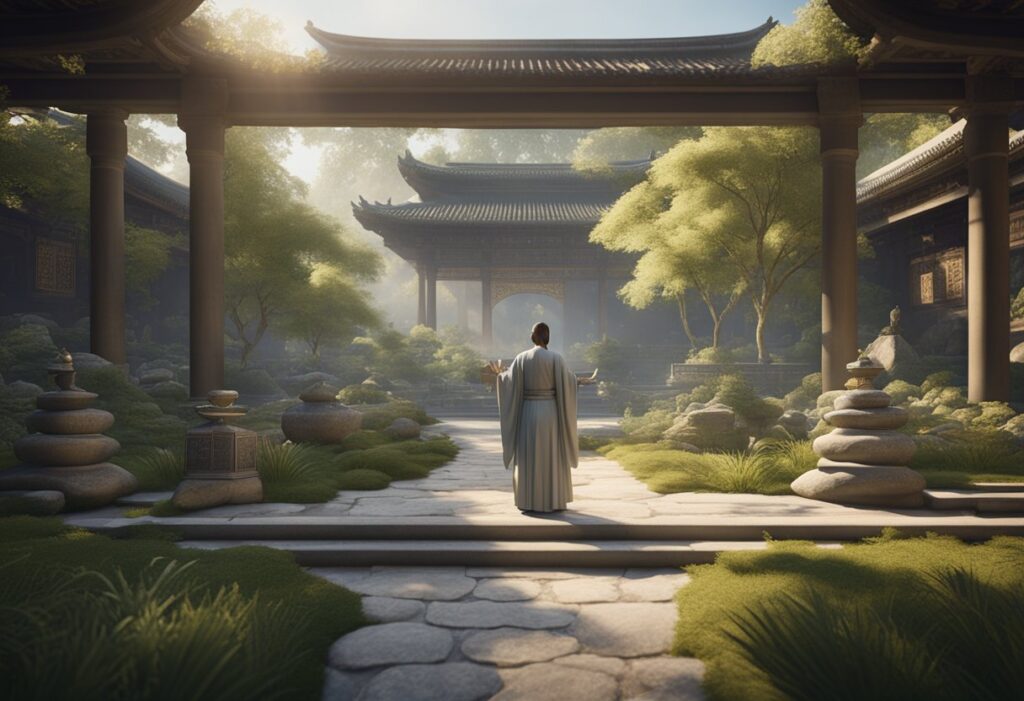
Tai Chi is an ancient Chinese martial art that has been practiced for centuries. It is known for its slow, flowing movements that improve balance, flexibility, and strength. Tai Chi is also known for its many health benefits, including reducing stress, improving mental clarity, and boosting the immune system.
One of the achievements of Tai Chi is its ability to improve mental and physical health. Tai Chi is a low-impact exercise that can be practiced by people of all ages and fitness levels. It has been shown to reduce stress and anxiety, improve balance and coordination, and increase flexibility and strength. Tai Chi is also believed to boost the immune system, improve cardiovascular health, and reduce the risk of chronic diseases such as diabetes and high blood pressure.
Another achievement of Tai Chi is its ability to teach self-defense techniques. The Tai Chi Classics, a collection of writings on Tai Chi, describe the martial art as a means of self-defense. Tai Chi focuses on redirecting an opponent’s energy and using it against them. Students of Tai Chi are taught to use their entire body to generate power and to strike their opponent’s vital points, such as the eyes, throat, and fingers.
The Tai Chi Classics also emphasize the importance of Qi, the life force that flows through the body. Tai Chi practitioners believe that by cultivating and directing Qi, they can improve their health and well-being. The Classics describe various techniques for cultivating Qi, such as deep breathing, visualization, and meditation.
In addition to its physical and mental benefits, Tai Chi has had a significant impact on Chinese culture. Tai Chi has been practiced in China for centuries and is deeply rooted in Chinese tradition. Tai Chi has also been a source of inspiration for artists and writers, who have incorporated its principles into their work. The Tai Chi Classics have been studied by scholars and practitioners alike, and have had a profound impact on the development of Tai Chi as a martial art and as a system of health and well-being.
Frequently Asked Questions

What are some recommended Tai Chi books for beginners?
For beginners, some recommended Tai Chi books are “The Harvard Medical School Guide to Tai Chi” by Peter M. Wayne, “The Tai Chi Handbook” by Herman Kauz, and “Tai Chi for Health” by Bruce Frantzis.
What is the difference between Tai Chi and Tai Chi Chuan?
Tai Chi and Tai Chi Chuan are the same thing. Tai Chi Chuan is the full name, but it is often shortened to just Tai Chi.
What are the 5 techniques of tai chi?
The five techniques of Tai Chi are Peng (ward-off), Lu (roll-back), Ji (press), An (push), and Cai (pull-down).
What is the Tai Chi Classics and why are they important?
The Tai Chi Classics are a collection of writings that describe the principles and practice of Tai Chi. They are important because they provide insight into the history, philosophy, and techniques of Tai Chi. The Classics were written by Tai Chi masters over many centuries, and they provide a deep understanding of this ancient art.
How can I access the Tai Chi Classics PDF?
The Tai Chi Classics are available online as PDFs. One source is this website, which has a collection of the Classics in English translation.
What is the significance of Tai Chi energy?
Tai Chi energy, also known as Qi or Chi, is the life force that flows through the body. In Tai Chi practice, the goal is to cultivate and balance this energy, which can lead to improved health, vitality, and mental clarity.
What is the difference between Yang Style Tai Chi and other styles?
Yang Style Tai Chi is one of the most popular styles of Tai Chi, known for its slow, flowing movements. Other styles of Tai Chi include Chen Style, Wu Style, and Sun Style. Each style has its own unique characteristics and emphasis, but they all share the fundamental principles and philosophy of Tai Chi.
How many times a week should you do tai chi?
It is generally recommended to practice tai chi at least three times a week to experience its benefits. However, the frequency can vary depending on individual preferences and goals. Some practitioners may choose to practice daily for greater consistency and progress, while others may opt for a few weekly sessions to maintain their well-being. It is important to find a balance that suits your schedule and allows you to fully engage with the practice.
Can I teach myself tai chi?
Yes, you can learn tai chi by yourself, and a good starting point is Enter Shaolin. There’s a saying that when the student is ready, the teacher will appear. So, take a look around this website, find a place to sign up, and begin your journey.
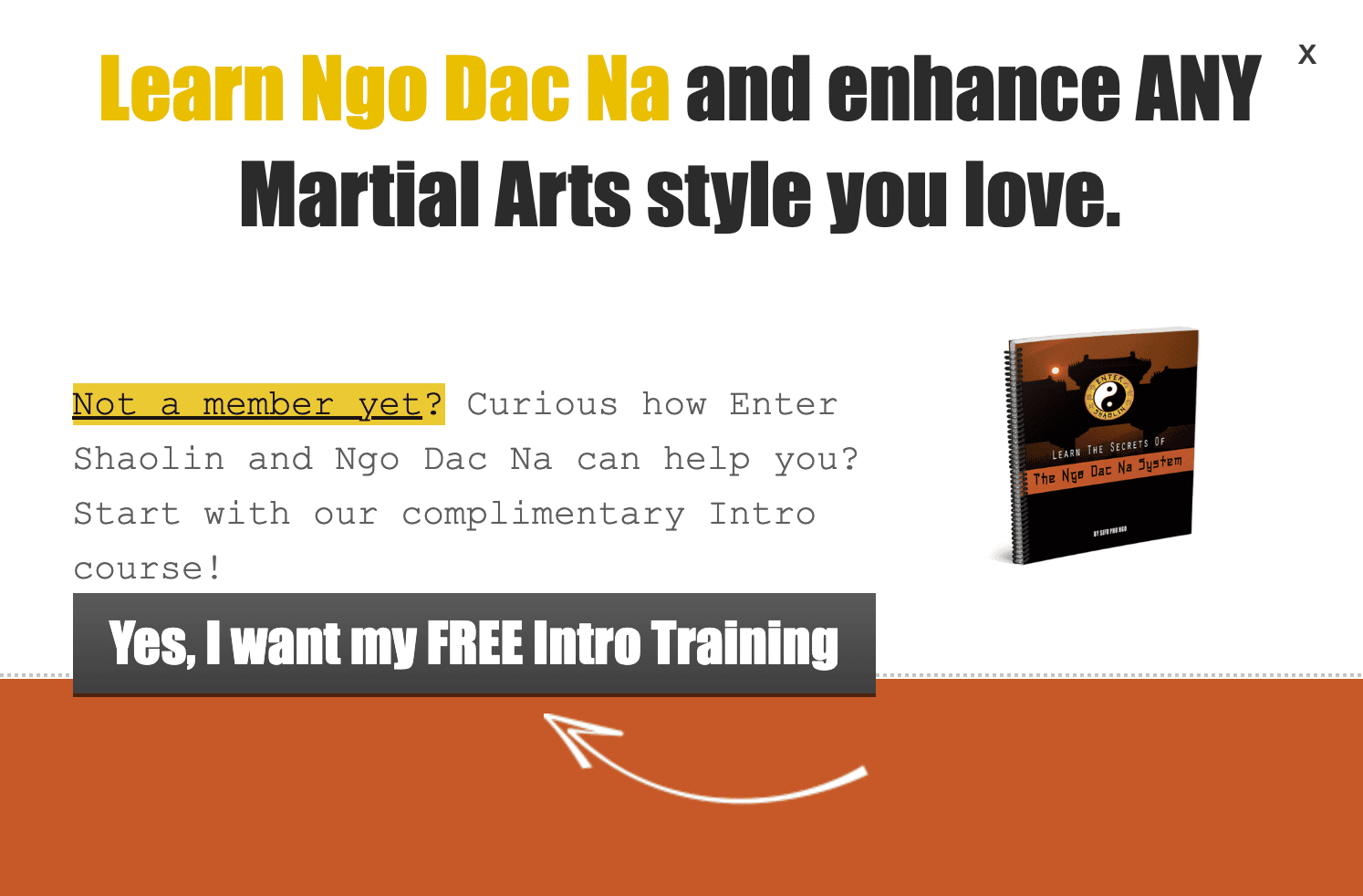

Love this article. Keep doing what you’re doing. Absolutely great read.
Thank you so much Terry, yes I plan on pouring it on 🙂
Thank you.
I am glad you enjoyed it! And you are welcome.
You mentioned above the 5 techniques of Tai Chi. What you listed are actually 5 of the 8 energies: Peng, Lieu, Ji, An, Cai, Lea, Jo and Kau. These are not actually techniques but basic energy concepts IE (translated as: 1) ward off, 2) roll back,3) press, 4) push 5) pull down 6) split,7) Elbow 8) Shoulder) where upon techniques are developed depending upon what your opponent gives you. The understanding and usage of these energies are learned from the practice of Tuishou (push hands) and later Sanshou. The basic techniques of Taijiquan are within the various forms. The best example of this is the 37 techniques as used in Cheng Men Chings Yang 37 form, though all systems Chen, Yang, WuHao, Wu and Sun have them.
Thank you for your clarification and additional information on the energies and techniques of Tai Chi. It’s always helpful to have a deeper understanding of the concepts and principles behind the practice. I appreciate your insights.